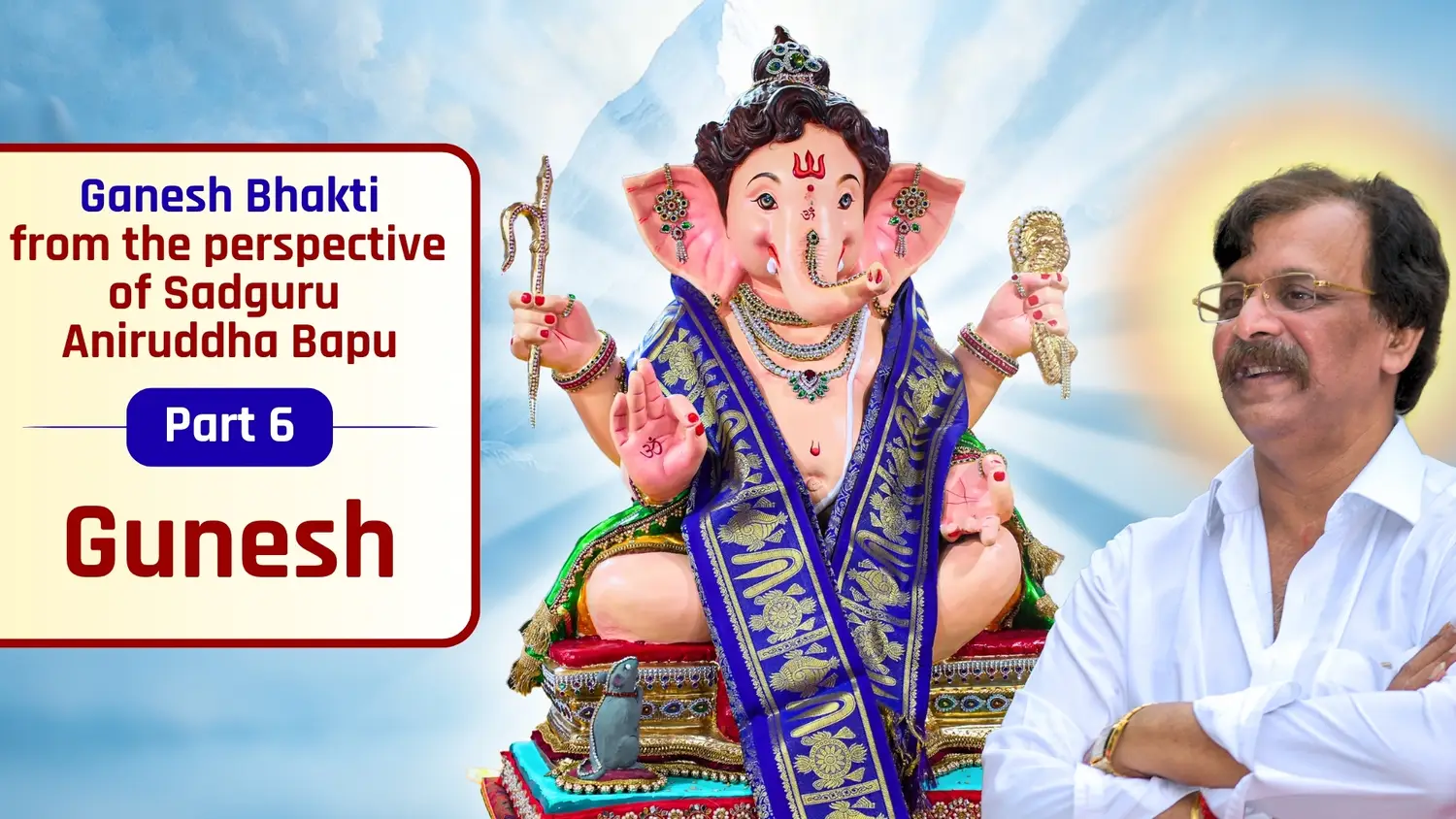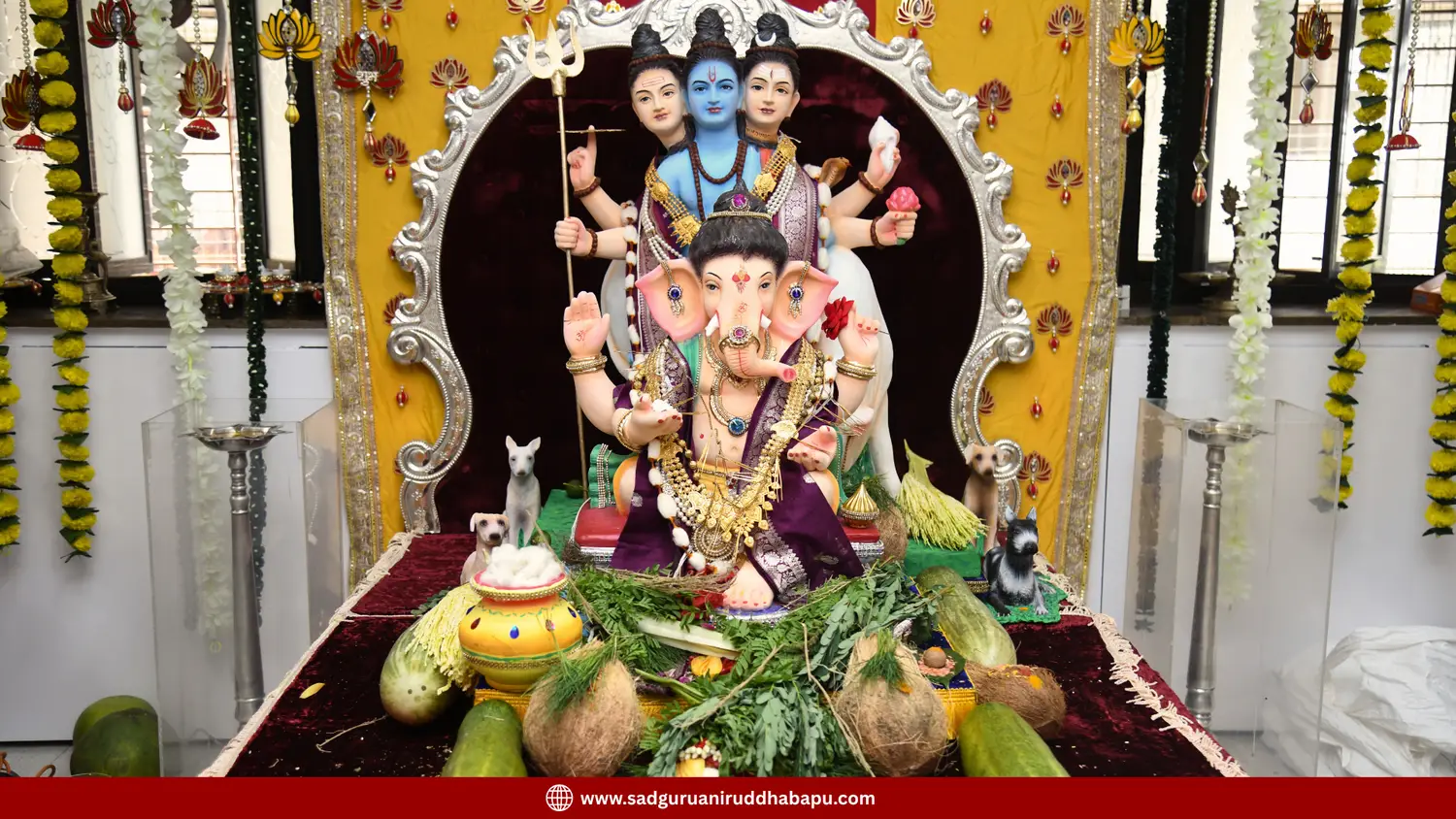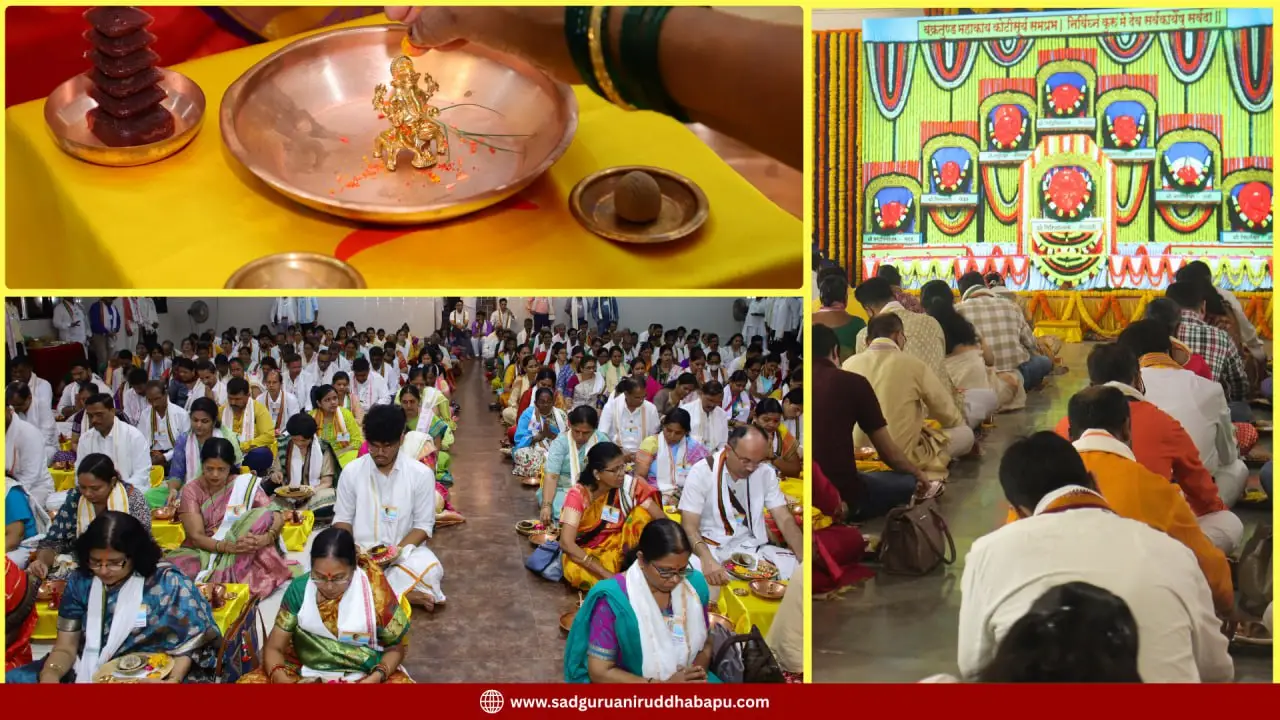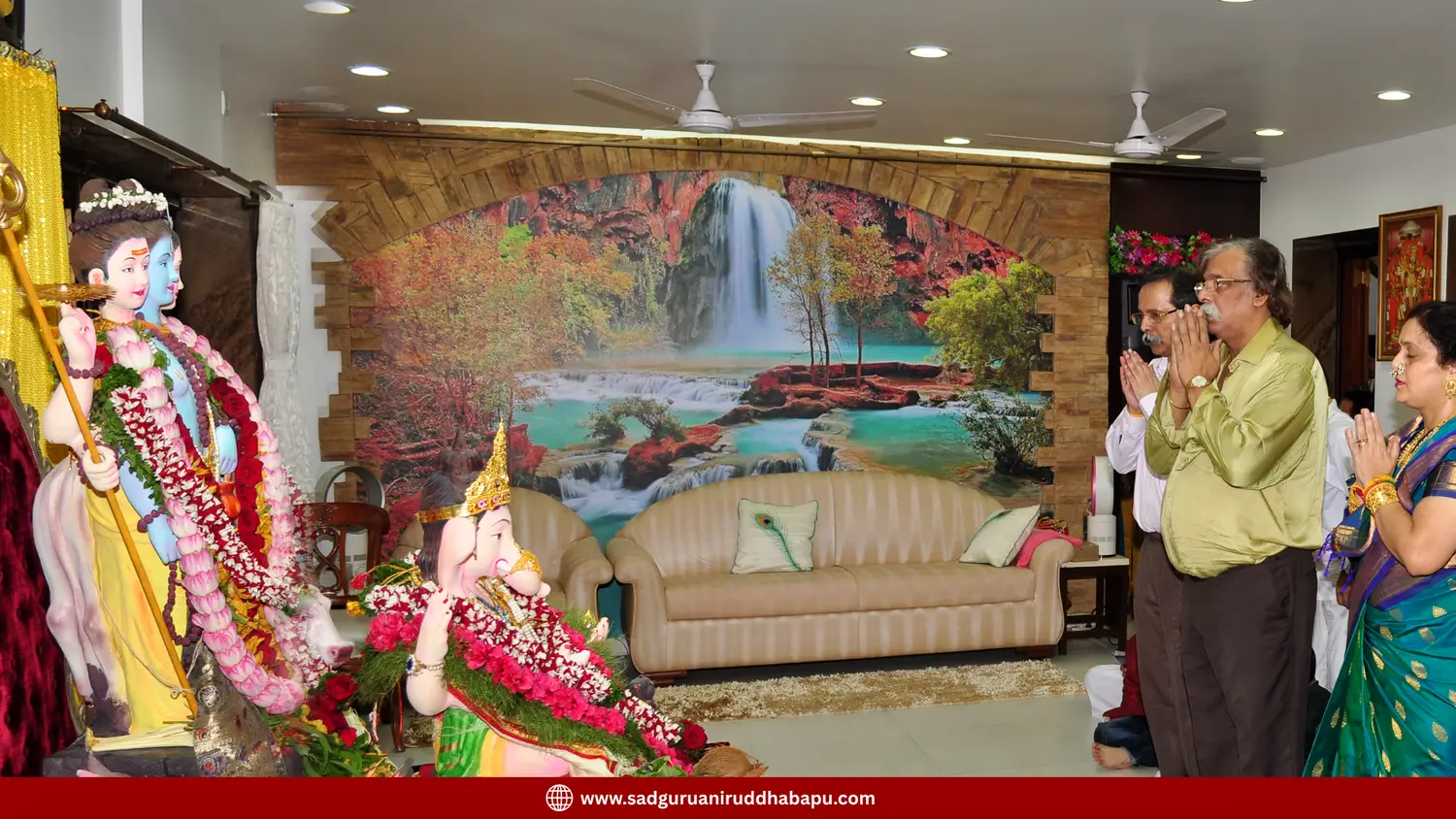Gunesh

मराठी हिंदी ಕನ್ನಡ বাংলা తెలుగు తెలుగు தமிழ்
Reference: Sadguru Shree Aniruddha Bapu’s editorial published in Dainik Pratyaksha dated 30-08-2006
Most of the people know the story of Bhagwan Ganesha's birth. Once, Bhagwan Shivshankar was immersed in deep meditation, and Devi Parvati had no idea when he would return home. She wished to take a bath (Abhyangasnan), but she could not deploy any of Shiva’s Gana as guards outside the bathing chamber.
So, she removed the fragrant paste she had applied to her right wrist, shaped it into the idol of a charming little boy, and infused it with life through her own breath. This very boy was Parvati’s beloved son, Gauri’s child — Vinayak, also known as Ganapati. Parvati then instructed this very Ganesha to stand guard outside the door of her private chamber and not to let anyone enter. Until then, little Ganesha had not seen anyone other than his mother, Parvati, who had given him life. Parvati Mata went into the inner chamber, and little Ganesh, armed with the Pash (lasso) and Ankush(goad) given to him by his mother, stood guard at the door. Just then, Bhagwan Shivshankar returned home after completing his meditation. Naturally, Shreemahaganapati, the eight-year-old boy, stopped him from entering. This, of course, enraged Bhagwan Shivshankar. But undaunted by Shiva’s anger, little Ganesha, directly challenged him to battle. The battle between Shiva and Ganesha turned out to be far more difficult than Shiva had anticipated. Little Ganesha displayed his immense strength, but ultimately, he accepted the blow of the Pashupatastra, the divine weapon released by Bhagwan Shivshankar and fell to the ground, his head severed from his body. Just then, Parvati Mata, recognizing the sound of the Pashupatastra, rushed out in haste. Upon seeing the condition of her newly created child, she cried out in anguish. Parvati Mata harshly rebuked Bhagwan Shivshankar for having dealt so severely with a small child. Bhagwan Shivshankar, too, felt ashamed of his act.

Parvati, the mother that she was, gradually began to assume a fierce form and transformed into the ferocious Ranchandika — a manifestation of Chandika as a valiant warrior for the destruction of all evil. Witnessing this unprecedented moment between Shiva and Shakti, the Devaguru Brihaspati intervened and instructed Bhagwan Shivshankar to bring little Ganesha back to life. As soon as Bhagwan Shivshankar pronounced his resolve, Parvati Mata’s fierce form began to calm down. Bhagwan Shivshankar then instructed his Ganas to bring the head of any newborn child they could find. The head that his attendants brought within the allotted time was that of a baby elephant. Realizing that if a new head was not attached to the child’s body within moments, it would be impossible to bring him back to life—and that this could provoke Parvati’s fiercest form into causing massive destruction—Bhagwan Shivshankar swiftly placed the elephant’s head onto Ganesha’s body. Instantly, the child came back to life, now in the form of Gajavadana—one with the face of an elephant. Realizing that if a new head was not attached to the child’s body within moments, it would be impossible to bring him back to life and that this could provoke Parvati Mata’s fiercest form into causing massive destruction—Bhagwan Shivshankar swiftly placed the elephant’s head onto little Ganesha’s body. Instantly, the child came to life once again, now in the form of Gajavadana—one with the face of an elephant.
Over the years, this story has been heard with deep faith, and it also provides the answer to why Ganesha is Gajavadana—the one with the elephant face. While the story is indeed true on an emotional and devotional level, it also reveals three profound principles that are absolutely essential for human life.
Parvati represents the Dravyashakti of the entire universe, also known as Uma. Dravya refers to every form of matter or substance that arises from the five great elements (Panchamahabhootas). The paste or coating (lepa-लेप or mala - ) of this Dravyashakti symbolizes its productive influence, that is, its guna (quality or attribute). Since the Guna also called the Ghanapran is the power (capacity) that brings about the influence which a given substance exerts on other substances due to its own inherent qualities, Shri Ganesha is regarded as the Ghanapran of the entire universe.

In a human being’s life, air (breath), water, and food are the three essential elements that sustain existence from birth to death. All of a person’s actions and tendencies are governed by the mind, and the mind itself depends upon Bhavshariri gunas (innate character) such as Guru, Laghu, and other inherent gunas (qualities or attributes). This play of gunas (qualities) can, at times, lead a person to the right path and elevate them to the peak of success, or at other times, misguide them and hurl them into a deep abyss.
Food, medicines, chemicals that come into contact with the body, animals, microorganisms and even other people we interact with, all these, through their positive or negative qualities, influence a person’s life. It is due to these unwanted or disruptive influences that many undesirable events occur in human life, these very obstacles are what we refer to as ‘Vighnas'.
Since Mahaganapati is the eternal and inexhaustible Ghanapran—the vital force of the entire universe, he is ever ready to dispel the harmful effects of external or internal qualities or attributes (gunas) that influence a human being. Every substance or form of matter functions solely because of its gunas (inherent qualities or attributes), and it is Bhagwan Ganesha alone who holds the power to completely transform these qualities and their effects. However, he only transforms harmful influences into beneficial ones and never the other way around. This is precisely why Mahaganapati is revered across the world as the Remover of Obstacles (Vighnanashak) and the Embodiment of Auspiciousness (Mangalmurti).
Owing to the bhakti towards Shree Mahaganapati, a person can avoid the negative effects of various adverse qualities in life and thus also avoid the obstacles they create. As the great saint Ramdas Swami proclaimed in his Mangalacharan (auspicious invocation):
"Ganadhisha jo Ish sarvagunānchā” (‘गणाधीश जो ईश सर्वागुणांचा')
Meaning: Ganesha is indeed the Master and Controller of all qualities and attributes.

